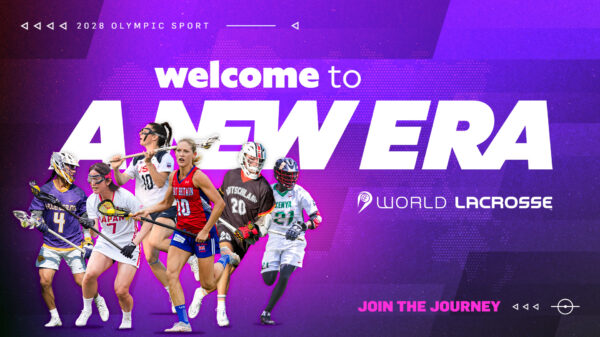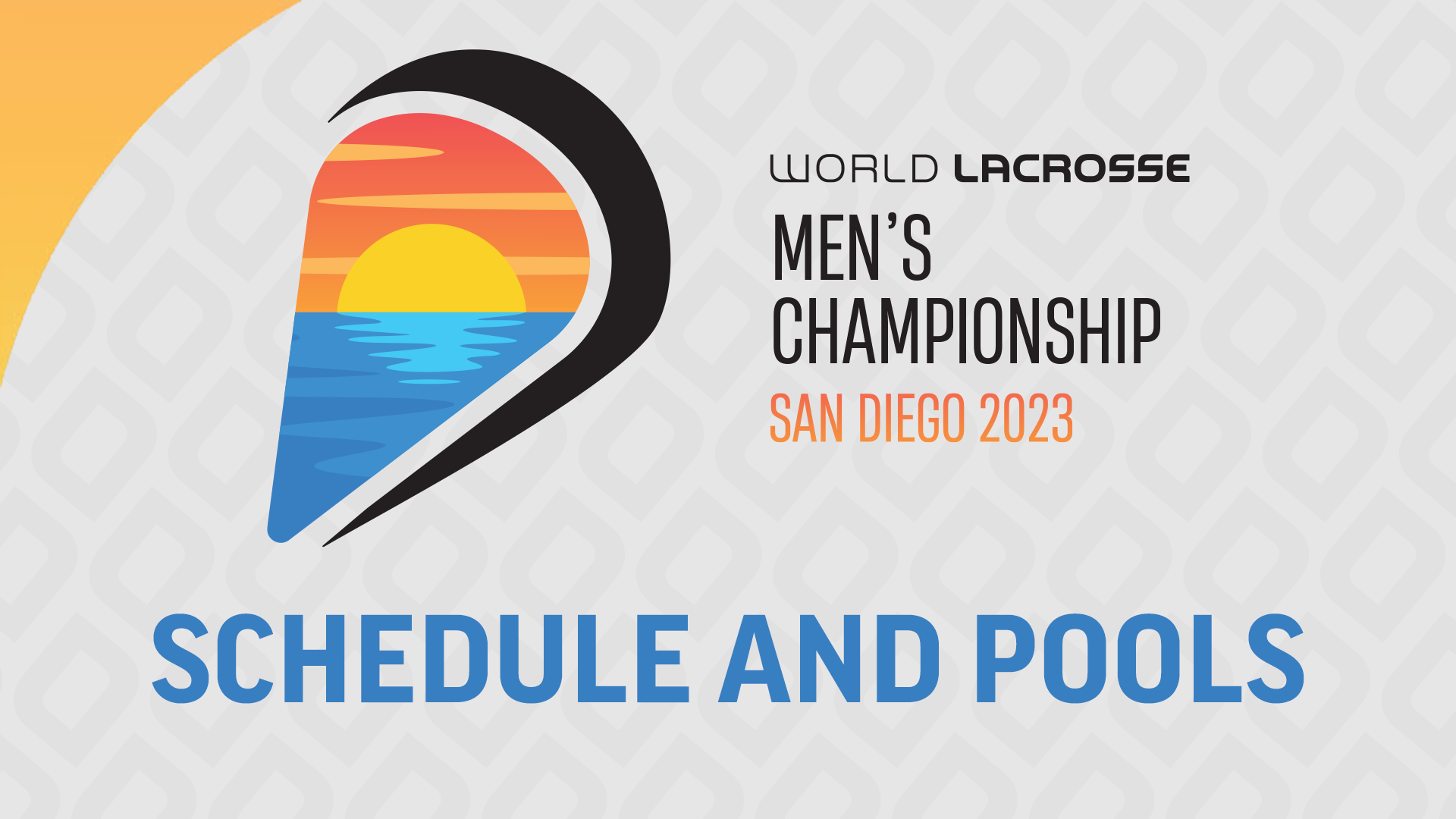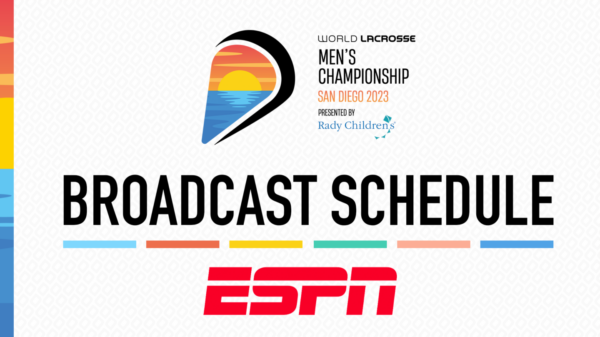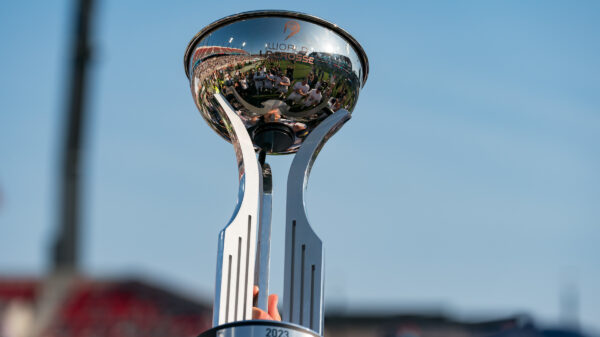Participation in NCAA lacrosse has grown by 47 percent in the last decade and participation by non-white athletes has grown exponentially by 2.5 times at the college level in the United States.
Lacrosse has indigenous origins but historically in North America, it has been more predominant in regionalized areas with less cultural diversity. The game’s diversification has taken time but is gaining significant momentum.
“People throughout the lacrosse community have called for growth of the game, diversification of the game,” said Brian Silcott, vice president of sports growth & development at USA Lacrosse. Silcott was the first Black head coach of a Major League Lacrosse team in 2006.
The intentional changes from the sport’s decision-makers have been to make lacrosse more accessible by expanding opportunities at the grassroots level, getting kids to play at a younger age and in more regions of both the U.S. and the world.
USA Lacrosse has a program called Flex6 Lacrosse that only requires a ball and a stick for athletes to play, aimed at creating more opportunities for players of all ages and skill levels. The organization also created a Diversity Grant Program, which includes six different types of grants for underrepresented groups and communities aimed at expanding access through targeted support.
Beyond USAL, the lacrosse community is making a strong push to grow the sport in urban communities.
Harlem Lacrosse serves more than 1,000 students nationwide across 19 programs in Baltimore, Boston, New York, Philadelphia and Los Angeles – with a focus on low-income communities and students who are most vulnerable to academic decline and drop out.
George Moore, a member of World Lacrosse’s Diversity and Opportunity Commission, was the first Black lacrosse player to letter at the Naval Academy. In 2012, he started Denver City Lax, the first inner-city lacrosse program in Colorado.
“Two of the keys in my experience are exposure to the game and good coaching at a young age,” said Moore. “Kids need to see lacrosse as an option to play. And then with how the sport has evolved, teaching fundamentals earlier helps kids develop a skillset to go on to play in high school, college and beyond.”
The sixes discipline developed by World Lacrosse has also helped address the sport’s accessibility with its smaller field, reduced numbers and rapid development opportunities.
In addition, the Next Collegiate League began in 2022 as the first-ever HBCU (historically black colleges and universities) lacrosse league, featuring Black athletes from six schools competing in sixes action.
The international piece of the puzzle also helps Black athletes take pride in their heritage and aspire to compete at the highest level of the sport.
Silcott was the director of operations for Jamaica Lacrosse for three years and emphasized the pride that Jamaican Americans took in representing their country, which has fielded teams at both the men’s and women’s championships.
“Seeing these international opportunities for this community is inspiring,” said Silcott. “When they can see that it isn’t just a sport for Americans, that Africans from Kenya or Uganda can compete internationally, or Jamaica or Puerto Rico, it makes a difference.”
Uganda became the first African team to compete in a world championship in 2014. Kenya competed in the U19 women’s championship in 2019.
There is more representation at the top levels of lacrosse than ever before for Black athletes. There were 159 Black athletes in total across the 73 NCAA Division I men’s programs in 2022, compared with 72 players in 2021. That’s more than a 120 percent increase in just one year.
The current MVPs of the men’s North American indoor and field pro lacrosse leagues are Black, with Dhane Smith in the National Lacrosse League and Trevor Baptiste in the Premier Lacrosse League.
“It’s important for kids to see all races in the sport of lacrosse,” said Smith. “You are seeing it more – the sport of lacrosse is growing and the only way it gets to the next level is for everyone to contribute.”
“I think it really helps to see people of color playing the sport,” added Moore. “That influence of seeing someone like you playing lacrosse gives kids something to aspire to.”
Black history in lacrosse has a strong lineage – Jim Brown was a two-time All-American in lacrosse at Syracuse University in the 1950s. Tina Sloan Green competed as the first Black player in USA Lacrosse’s history in 1969. In 1975, Morgan State University upset No. 1-ranked Washington and Lee University in men’s lacrosse, the inspiration for the “Ten Bears” book, co-authored by Miles Harrison Jr., who co-founded the program.
His son, Kyle Harrison, the current director of player relations and diversity and inclusion at the PLL, was the first non-white recipient of the Tewaaraton Award – given to the best player in NCAA Division I – in 2005. He won the national championship with Johns Hopkins University that season.
Despite the history, recent and rapid change for Black lacrosse athletes has only just begun.
“The most important results lie ahead of us,” said Silcott. “Now, from local communities to the World Lacrosse level, people are abundantly aware of the issue, and the key is that conversations are happening to grow the game for the future.”
Going forward, the emphasis will continue to be on outreach into urban communities and partnering with existing infrastructure, like YMCAs and parks and recreation departments to engage with Black and brown athletes and build participation from the ground up.
In Southern California, World Lacrosse is currently in the process of working with USAL and the City of Los Angeles Department of Recreation and Parks to deliver a multi-phased lacrosse program, with the objective of providing access and opportunity to communities where lacrosse does not yet have a foothold.
Black athletes often have other options in sports, often basketball or football. Silcott emphasized that a key was to recognize that option and persist in finding the kids who enjoy lacrosse.
“Ultimately, we need to work together more and against each other less,” concluded Silcott. “If we push together and put our focus into moving forward in a positive direction, the success will come.”







